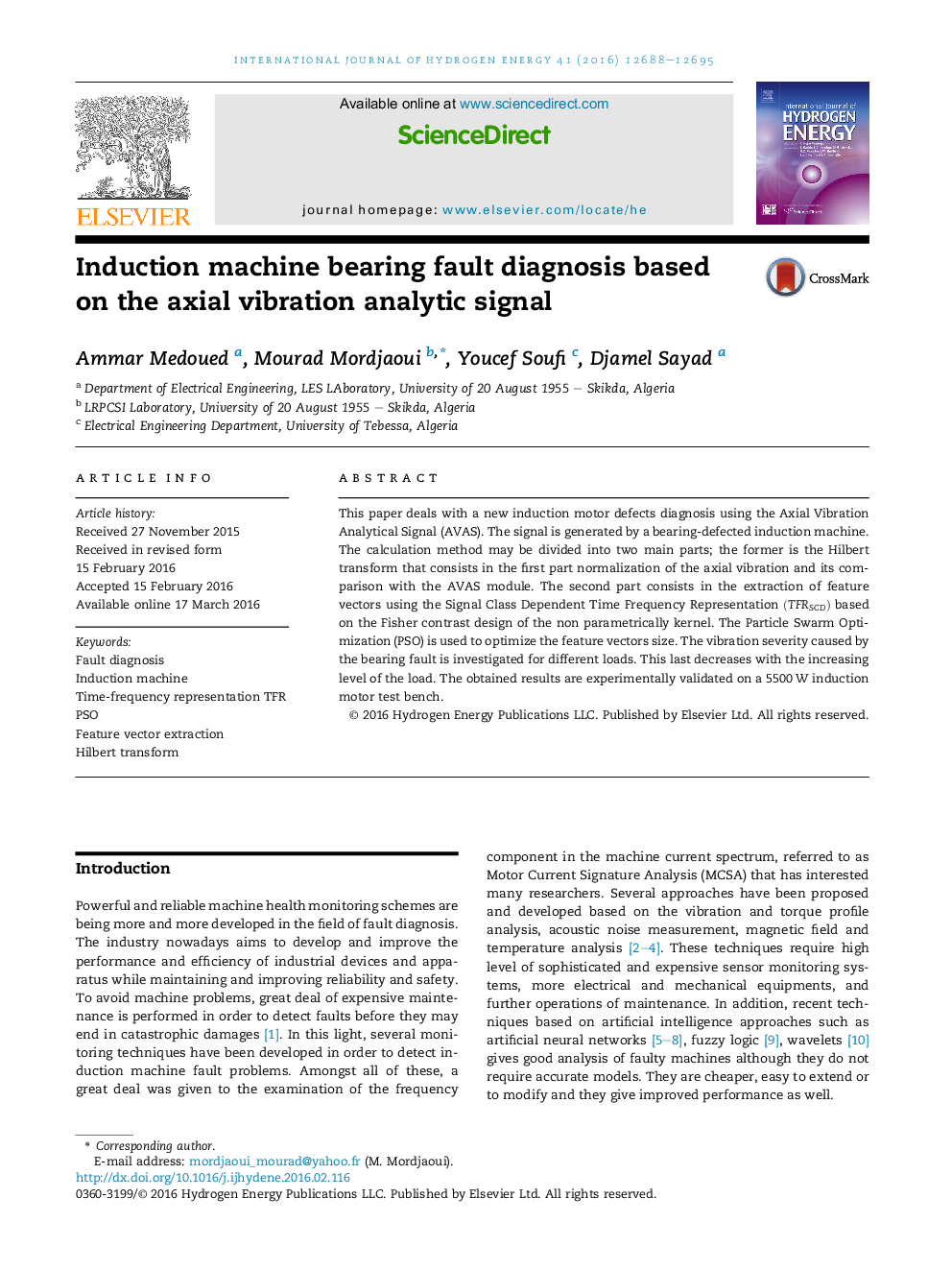| Article ID | Journal | Published Year | Pages | File Type |
|---|---|---|---|---|
| 1268386 | International Journal of Hydrogen Energy | 2016 | 8 Pages |
•This paper deals with a new induction motor defects diagnosis using the Axial Vibration Analytical Signal (AVAS).•Due to the low magnitudes of the vibration signals, TFRSCD is used to extract a feature vectors.•We introduce the cloud point dispersion parameter ξ that defines TFRSCD and the extraction of the feature vectors.•In compliance with standards, the vibration defect level has been evaluated using a severity parameter.
This paper deals with a new induction motor defects diagnosis using the Axial Vibration Analytical Signal (AVAS). The signal is generated by a bearing-defected induction machine. The calculation method may be divided into two main parts; the former is the Hilbert transform that consists in the first part normalization of the axial vibration and its comparison with the AVAS module. The second part consists in the extraction of feature vectors using the Signal Class Dependent Time Frequency Representation (TFRSCD)(TFRSCD) based on the Fisher contrast design of the non parametrically kernel. The Particle Swarm Optimization (PSO) is used to optimize the feature vectors size. The vibration severity caused by the bearing fault is investigated for different loads. This last decreases with the increasing level of the load. The obtained results are experimentally validated on a 5500 W induction motor test bench.
